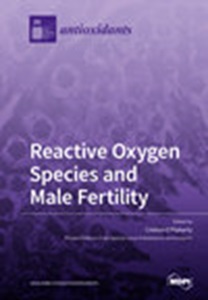Carissa carandas 提取物的生物活性分析和植物化学分析:抗氧化、抗炎和抗尿路感染特性
IF 6
2区 医学
Q1 BIOCHEMISTRY & MOLECULAR BIOLOGY
引用次数: 0
摘要
Carissa carandas L.(天南星科)广泛分布于亚洲的热带和亚热带地区,包括巴基斯坦、印度、阿富汗和斯里兰卡。C. carandas 被认为是传统医药系统中不可或缺的组成部分,可用于治疗多种疾病。本研究旨在采用生物测定指导方法,通过连续提取来评估这种植物的植物化学成分含量和生物潜力。用正己烷萃取 C. carandas 粉末以去除脂肪物质,然后用二氯甲烷、甲醇和 50% 甲醇依次萃取残留物。对所有顺序提取的粗提取物进行植物化学成分(总酚、类黄酮和花青素)、体外抗氧化活性(FRAP、DPPH)、体外抗炎活性(血清和鸡蛋白蛋白变性)、体内抗炎活性(卡拉胶和甲醛诱导的爪水肿)和体外抗菌活性评估。然后使用液液分离法对活性粗提取物进行分馏,再通过 RP-HPLC 进一步分离活性馏分。然后对活性馏分进行 LC-ESI-MS/MS 分析,以初步确定其生物活性代谢物,并进行 HPLC 定量。分析结果表明,与二氯甲烷提取物和 50%甲醇提取物相比,甲醇提取物具有更高的植物化学成分含量、自由基清除特性、减轻两种模型(体外和体内)的炎症反应以及对尿路感染致病菌的抗菌特性。与 C. carandas 甲醇提取物相比,活性甲醇提取物经液-液分配(LLP)后得到的乙酸乙酯馏分具有更高的活性。RP-HPLC 亚馏分法得到了七个亚馏分,但生物潜力略有下降。因此,对 LLP 萃取物 B 进行了进一步分析。通过 LC-ESI-MS/MS 分析,在 LLP 活性乙酸乙酯馏分中初步鉴定出了酚酸(绿原酸、喹酸)、类黄酮(槲皮素)和花青素(芍药苷-3-阿拉伯糖苷、鹅掌楸苷-3-半乳糖苷、鹅掌楸苷-3-芸香苷)。通过高效液相色谱法,绿原酸、鞣花酸和奎宁酸的干重定量分别为 17.6 微克/毫克、5.90 微克/毫克和 3.30 微克/毫克。C. carandas 可被视为一种很有前景的治疗植物,目前的研究结果为支持古代医学传统中的说法提供了更多证据。这些发现凸显了其在保健、医药、化妆品、防腐剂和天然着色剂方面的应用前景。本文章由计算机程序翻译,如有差异,请以英文原文为准。
Bioactivity Profiling and Phytochemical Analysis of Carissa carandas Extracts: Antioxidant, Anti-Inflammatory, and Anti-Urinary Tract Infection Properties
Carissa carandas L. (Apocynaceae) is widely distributed in tropical and subtropical regions of Asia including Pakistan, India, Afghanistan, and Sri Lanka. C. carandas is considered as an integral component of traditional medicinal systems to combat several health ailments. The present study aimed to assess this plant’s phytochemical contents and biological potential by performing sequential extraction, adopting a bioassay-guided approach. C. carandas powder was extracted with n-hexane to remove fatty substances and then residues were sequentially extracted with dichloromethane, methanol, and 50% methanol. All the sequential crude extracts were evaluated for phytochemical contents (total phenolics, flavonoids, and anthocyanins), in vitro antioxidant activity (FRAP, DPPH), in vitro anti-inflammatory activity (serum and egg albumin denaturation), in vivo anti-inflammatory activity (carrageenan- and formaldehyde-induced paw edema), and in vitro antimicrobial activity. Active crude extract was then partitioned using the liquid-liquid separation method followed by further separation of the active fraction by RP-HPLC. The active fraction was then subjected to LC-ESI-MS/MS analysis for tentative identification of bioactive metabolites responsible for its bioactive properties, followed by HPLC quantification. The analysis revealed methanol extract to have more phytochemical contents, radical scavenging properties, reduced inflammation in both models (in vitro and in vivo), and antimicrobial properties against urinary tract infection-causing agents as compared to dichloromethane and 50% methanol extracts. The ethyl acetate fraction obtained after liquid-liquid partitioning (LLP) of the active methanol extract exhibited more activity as compared to C. carandas methanol extract. RP-HPLC sub-fractionation yielded seven sub-fractions, but a slight decrease in biological potential was recorded. Therefore, LLP fraction B was subjected to further analysis. LC-ESI-MS/MS analysis led to the tentative identification of phenolic acids (chlorogenic acid, quinic acid), flavonoids (quercetin), and anthocyanins (peonidin-3-arabinoside, delphinidin-3-galactoside, delphinidin-3-rutinoside) in the active LLP ethyl acetate fraction. Chlorogenic acid, ellagic acid, and quinic acid were quantified as 17.6 µg/mg, 5.90 µg/mg, and 3.30 µg/mg, respectively, on a dry weight basis by HPLC. C. carandas may be considered a promising therapeutic plant, and the results of the current study provide more evidence to support the assertions made in ancient medical traditions. These findings highlight its promising applications in health, medicine, cosmetics, preservatives, and as a natural coloring agent.
求助全文
通过发布文献求助,成功后即可免费获取论文全文。
去求助
来源期刊

Antioxidants
Biochemistry, Genetics and Molecular Biology-Physiology
CiteScore
10.60
自引率
11.40%
发文量
2123
审稿时长
16.3 days
期刊介绍:
Antioxidants (ISSN 2076-3921), provides an advanced forum for studies related to the science and technology of antioxidants. It publishes research papers, reviews and communications. Our aim is to encourage scientists to publish their experimental and theoretical results in as much detail as possible. There is no restriction on the length of the papers. The full experimental details must be provided so that the results can be reproduced. Electronic files and software regarding the full details of the calculation or experimental procedure, if unable to be published in a normal way, can be deposited as supplementary electronic material.
 求助内容:
求助内容: 应助结果提醒方式:
应助结果提醒方式:


